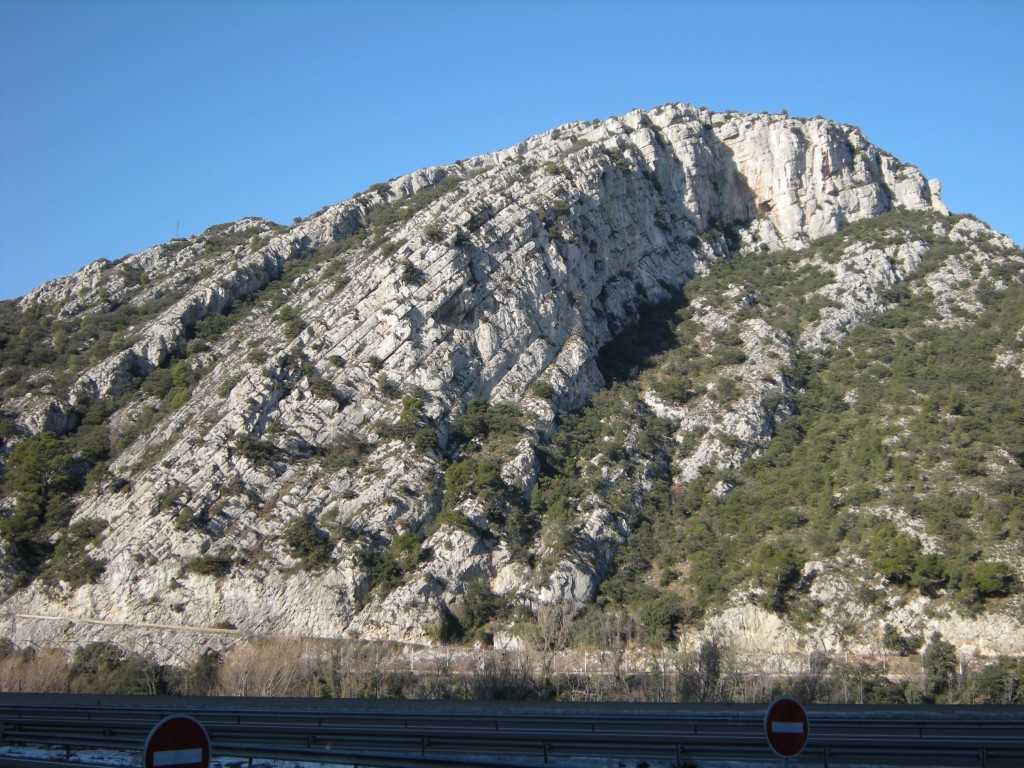ITER NEWSLINE
65
Jurassic rock
Robert Arnoux
Want to know what the bottom of the ocean was like in Jurassic time, one hundred and fifty million years ago? Just look at the big rock formation south of the bridge of Mirabeau.
It is made of successive limestone layers which were once sediments accumulated on the ocean floor, explains Jean-Simon Pagès, a geologist at Digne Geological Reservation. As the deposits happened in infrequent cycles, every layer is clearly separated from the other.
By the mid Cretaceous, some 100 million years ago, plate tectonics started pushing Africa toward Europe; large folds appeared on the ocean floor rising higher and higher as tectonic forces exercised more and more pressure.
Out of this process, which lasted tens of millions of years, the mountains of Provence were born and slowly twisted into their present shape—the Luberon, Sainte-Victoire, Lure, each following an east-west direction.
70 million years ago, when they were only mere undulations in a tropical, swampy landscape, they became home to the dominant fauna of the time—the last dinosaurs, whose fossilized eggshells can still be found around Sainte-Victoire.
The rock formation at Mirabeau is one of the most perfect examples of an "anticline"—a convex fold with its oldest beds at its core—and one of France's most famous geological landmarks.
return to Newsline #65


